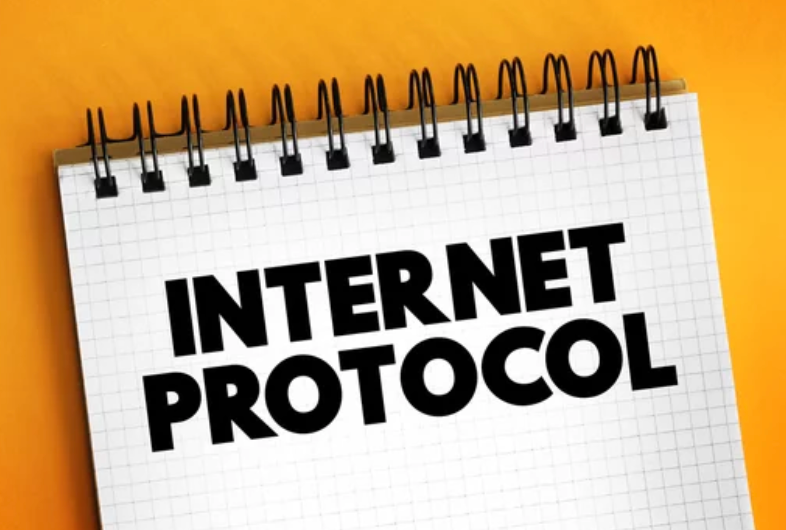SMTP Ports 25, 465, & 587: Which should you choose?
Email sendability is crucial, and SMTP is the backbone for internet transmission. At Maileroo, choosing the right SMTP port can significantly impact email deliverability and sender reputation. The most critical SMTP ports are Port 25, Port 587, and Port 465.

When it comes to email, being able to reliably send messages is one of the most important skills.
SMTP (Simple Mail Transfer Protocol) plays a crucial role in this process, acting as the backbone for email transmission across the internet.
At Maileroo, we understand that choosing the right SMTP port can significantly affect your email deliverability and sender reputation.
But what exactly is SMTP?
Put simply, it’s the technology responsible for sending emails from one server to another. When you send an email, the data inside it goes through certain ports, which then send the message to where it needs to go.
And there are several checkpoints along the way, such as email authentications that decide whether a message should go to the inbox, be rejected, or be marked as spam.
The most critical SMTP ports to know are Port 25, Port 587, and Port 465.
However, not all SMTP ports serve the same purpose or carry the same level of efficacy for your email outreach.
In fact, the choice of SMTP port can have far-reaching implications.
Select the wrong one, and you might find your emails languishing in spam folders or, worse, not being delivered at all.
This underscores the importance of making an informed choice, as the right SMTP port supports your emails’ delivery pathway, safeguarding your sender's reputation—- and in this article, we will talk all about just that.
Understanding SMTP Ports
When emails are sent over the internet, they go through SMTP ports, which turn the digital messages from mail servers into data that can be sent to the right destinations.
Every SMTP port is very important in the complicated process of sending emails. It is not just a channel; it is also like a guardian that makes sure messages are delivered safely and correctly.
Overview of Ports 25, 465, and 587
- Port 25: Established alongside the birth of SMTP in 1981, Port 25 was the original pathway for email communication.
It is still necessary for servers to send and receive emails, but because it is open, spam and other malicious things can use it. Because of this, client-to-server email submissions are not as common in today's internet world, which is more concerned with security.
- Port 465: This port was originally made for sending secure emails using SSL (Secure Sockets Layer). It was quickly used for all kinds of encrypted communication.
However, it was never officially recognised by the Internet Assigned Numbers Authority (IANA) and was later deprecated in favour of Port 587. Still, it is sometimes necessary to use it in legacy systems and other places where certain configurations require it.
- Port 587: This port is currently recommended for sending emails, especially from an email client to a mail server. It supports secure transmission through STARTTLS, a protocol extension that turns an insecure connection into a secure one.
It is the best way to make sure that emails not only get to their intended recipient, but also get there safely, protecting against data theft and listening in.
Picking the right SMTP port is not just a technical matter; it is also a strategic choice that affects how well emails get delivered, how safe they are, and ultimately how well digital communication works.
Understanding the unique features and functionality of Ports 25, 465, and 587 is crucial in making the right choice for your specific needs. Below are some other important considerations when it comes to SMTP ports:
Port 25: The Default SMTP Port
From the very beginning of the internet, port 25 has been known as the standard port for SMTP (Simple Mail Transfer Protocol).
It was first made so that emails could be sent without encryption or secure transmission being thought about. This is because the internet was built on trust in the early days.
Common uses and limitations
Today, Port 25 is primarily used for SMTP relaying, where email is sent from an email server to another email server.
But because it is linked to sending emails without encryption, it is not as popular for sending direct mail from email clients to mail servers.
Use for non-encrypted connections
Many people still think of port 25 as the standard SMTP port, but as people become more aware of and need for security, they send less sensitive information through it. Its capability to function without encryption makes it a less desirable choice in the face of evolving cybersecurity threats.
Issues with spam and blockage
Many ISPs and hosting companies block Port 25 because spammers use it for spam, which is meant to cut down on spam traffic.
Because of this blockage, changing to different ports that support secure email protocols is necessary in some situations.
Port 465: SMTPS (Secure SMTP)
Port 465 was made because Port 25 had security flaws that needed to be fixed. It was made for SMTPS (Secure SMTP), which encrypts SMTP traffic and sends it over SSL (Secure Sockets Layer).
The introduction of this rule was a big step towards protecting the privacy and integrity of email contents while they are being sent, keeping them from being read or changed.
Transition to this port and its eventual deprecation
Initially, Port 465 was quickly adopted because it had better security features. However, its official recognition was short-lived.
The Internet Assigned Numbers Authority (IANA) eventually stopped supporting Port 465 in favour of STARTTLS, a different method that uses the same port to turn an existing unprotected connection into a secure one.
Although it has been deprecated, many service providers still support Port 465 for SMTP.
Current status and recommendations
Port 465 is an unofficial option for secure SMTP submission from email service providers. It uses implicit TLS, starting as a secure connection, ensuring higher security from the outset.
It is actually a good choice for organisations that put security first and need an encrypted connection that starts right away. It is especially suggested for uses where switching from an unprotected to a protected connection might not be possible or might be hard to do. When you use Port 465 to send data, it stays private and unaltered, as long as you follow strict security rules and compliance requirements.
Port 587: Submission Port
Port 587 is tailored explicitly for email submission, not email relay, making it an essential component for both personal and business communication. It stands as the default SMTP port recommended for sending emails, as it is designed to work seamlessly with modern email systems.
Enterprises, in particular, will find Port 587 to be the most reliable choice for establishing secure connections for email submission.
Recommendations for Use with Modern Email Systems
For organisations looking to implement or update their email systems, Port 587 should be the preferred choice. It works with STARTTLS, a protocol that turns an initially insecure connection into a secure one. This encrypts email and ensures that sensitive information remains confidential and safeguarded against potential cyber threats while it is being sent.
Following best practices for security and efficiency when using Port 587 for email communication is a smart choice for companies that want to keep up high standards of data protection and compliance.

Comparing the Ports
When you look at Port 465 and Port 587 side by side, you can see some important differences. These include how secure they are, how well they work with modern email systems, and how they should be used.
Security Aspects
Port 465, known for initiating encrypted connections from the outset, offers a layer of security suitable for environments where upgrading from an insecure to a secure connection isn't feasible.
Port 587, on the other hand, supports the STARTTLS protocol, which lets you switch from an unprotected to a protected connection, making it safer after the first contact.
However, both ports ensure that data transmission remains secure, but the method of achieving this security differs.
Compatibility with Modern Email Infrastructure
In line with how modern email systems work and what they need, port 587 is specifically made for sending emails. This works great in places where a lot of different email clients and servers need to work together, which is why modern enterprise email infrastructures use it by default.
Contrarily, Port 465, while secure, is less frequently used because it only focuses on starting encrypted sessions, which not all contemporary systems may be able to support or require.
Recommended Scenarios for Each Port
Port 465 is recommended for businesses and apps that need a secure connection right away and may not have many ways to upgrade to secure connections. Its use makes sure that data is encrypted from the beginning of the transmission process.
On the other hand, Port 587 is better suited for general email submission needs, particularly in cases where transparent upgrading from an insecure to a secure connection (via STARTTLS) is a priority.
This makes Port 587 the advisable choice for businesses seeking flexible, compliant, and secure email communication methods within modern email infrastructures.

Best Practices for Choosing an SMTP Port
Before setting up or migrating your email system, evaluate your network's capabilities and email system requirements. Consider email traffic volume, content type, and IT infrastructure.
Select the most suitable SMTP port based on operational demands and security standards.
Prioritise security by evaluating encryption protocols and compatibility with current email clients and servers. This ensures a stable and consistent email service.
When selecting an SMTP port, prioritize security by comparing encryption protocols with your email server and client software, and ensuring compatibility with current email clients and servers for a stable and consistent email service.
Wrap Up
To sum up, picking the right SMTP port is very important for the safety and dependability of email communications in any business. Port 465 is best for immediate encryption, while Port 587 is better for flexibility and compliance.
Before you make this choice, you should learn a lot about the needs of your business, the security needs of your email system, and the technology that runs it.
Also, email security rules and guidelines are always changing, so it is important to stay up to date and check your email system's settings often to make sure they match the most recent security protocols and provide the best protection.

